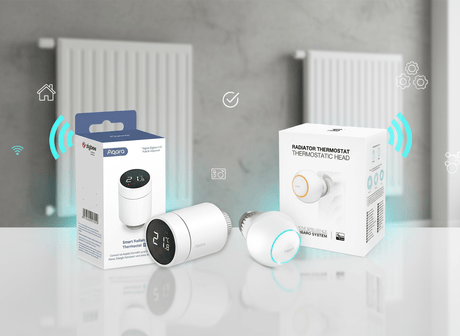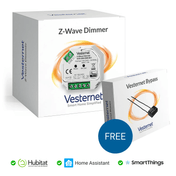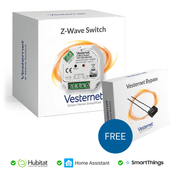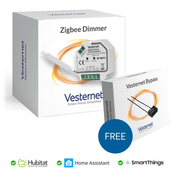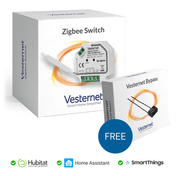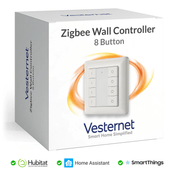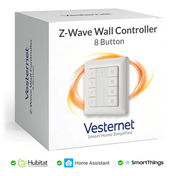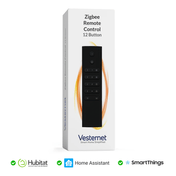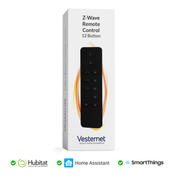Rising energy costs and the push toward smarter homes have made intelligent radiator controls essential for modern heating management, with homeowners seeking solutions that balance comfort, efficiency, and automation. Whether you're looking to control your heating from your phone or create sophisticated heating schedules, the choice between ecosystem-integrated and standalone solutions significantly impacts your smart home experience.
This comprehensive comparison will help you choose between Aqara's ecosystem-integrated approach and Fibaro's standalone Z-Wave solution, examining how each addresses different smart home setups and user preferences. As specialists in smart home technology with extensive experience testing and installing heating controls, Vesternet provides unbiased insights to guide your decision toward the most suitable radiator thermostat.

Aqara's Ecosystem Approach to Smart Heating
The Aqara Radiator Thermostat E1 represents a fundamentally different approach to smart heating, operating as part of a connected ecosystem rather than as an isolated device. This thermostat relies on external Aqara sensors to gather comprehensive environmental data, creating a network effect where multiple devices work together to optimise heating performance based on real room conditions rather than just radiator temperature.
Key Ecosystem Features
- External temperature sensor integration for accurate room temperature readings
- Door and window sensor coordination to prevent energy waste during ventilation
- Face recognition automation via Camera Hub G3 for personalised heating preferences
- Geofencing capabilities that prepare your home temperature before arrival
- Multi-home support for managing heating across different properties
This ecosystem approach transforms the E1 from a simple radiator controller into part of an intelligent heating orchestration system, where decisions are made based on occupancy patterns, personal preferences, and environmental conditions detected throughout your home.

Fibaro's All-in-One Z-Wave Solution
The Fibaro Heat Controller takes a different philosophy, packing comprehensive functionality into a single, self-contained unit that operates independently within Z-Wave networks. This approach means the device includes built-in temperature sensing, visual feedback systems, and intelligent algorithms without requiring additional ecosystem components to deliver sophisticated heating control.
Standalone Capabilities
- Built-in temperature sensor with 0.5°C accuracy
- LED ring providing colour-coded temperature indication
- Automatic calibration and descaling functions
- Open window detection and automatic response
- Voice control compatibility through various Z-Wave systems
The Heat Controller's design philosophy centres on providing immediate, intuitive control whether you're adjusting settings manually on the device, using smartphone apps to control your heating from your phone, or setting up complex automation routines through your chosen Z-Wave hub.
Ecosystem Integration vs Protocol Flexibility
The fundamental difference between these radiator thermostats lies in their approach to smart home integration. The Aqara E1 requires specific ecosystem components to unlock its full potential, including an Aqara hub, temperature sensors, and potentially other Aqara devices for comprehensive automation. This creates a tightly integrated system where each component enhances the others' capabilities.
In contrast, the Fibaro Heat Controller operates on the open Z-Wave protocol, making it compatible with numerous smart home platforms including Home Assistant, SmartThings, Hubitat, and dedicated Z-Wave controllers. This flexibility means you can integrate the device into existing smart home setups without committing to a specific ecosystem.
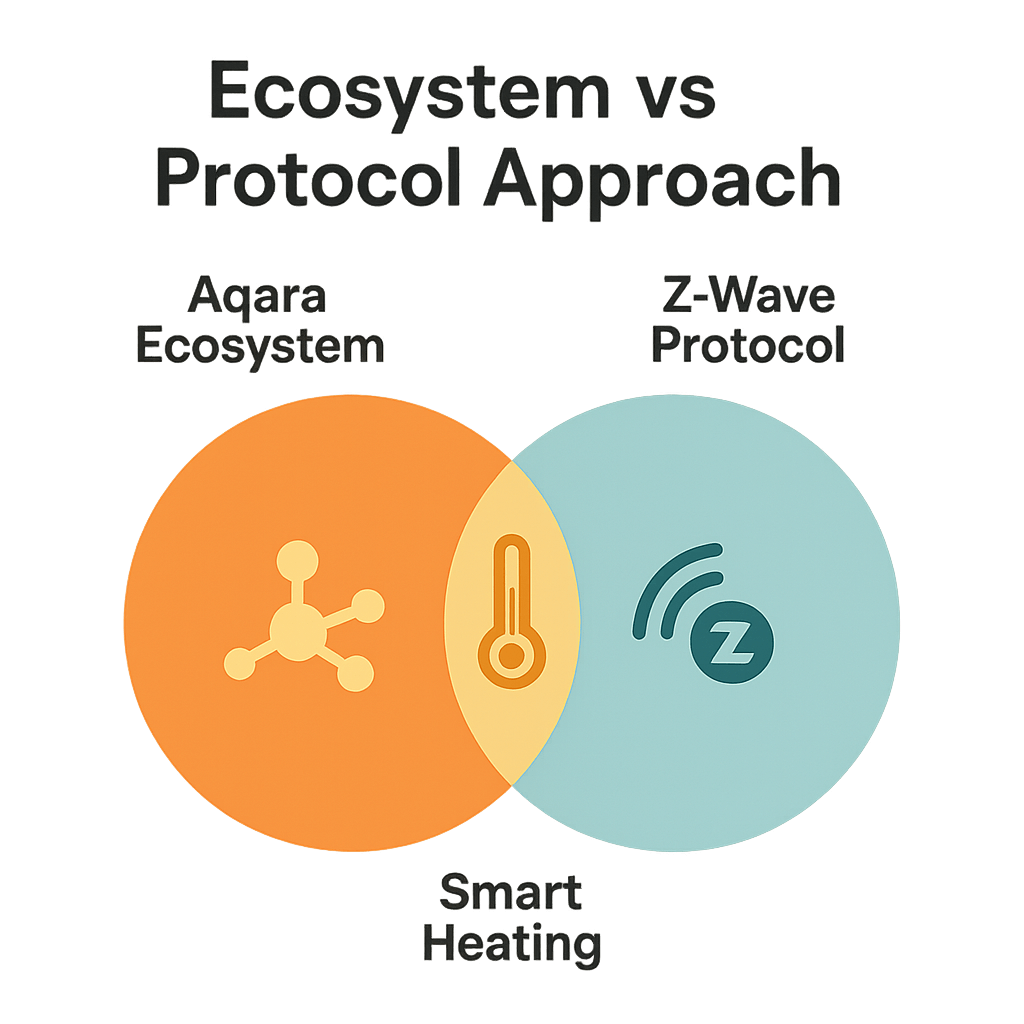
Integration Requirements Comparison
- Aqara E1: Requires Aqara hub and works best with multiple Aqara sensors
- Fibaro: Compatible with any Z-Wave controller or smart home platform
- Aqara: Advanced features depend on specific ecosystem components
- Fibaro: Full functionality available immediately upon Z-Wave pairing
The choice between these approaches often depends on your existing smart home infrastructure. If you already use Aqara products or are building a new smart home from scratch, the E1's ecosystem benefits become compelling. However, if you have existing Z-Wave devices or prefer platform flexibility, the Fibaro controller offers broader compatibility options.
Consider also the long-term implications: Aqara's approach may require additional sensor purchases to achieve optimal performance, while Fibaro's solution includes necessary sensors internally. However, Aqara's multi-sensor approach can provide more nuanced environmental data across larger spaces, potentially offering superior heating optimisation in complex home layouts.
Real-World Heating Performance and Responsiveness
Both devices excel in temperature control accuracy, but their approaches to achieving optimal heating differ significantly. The Aqara E1 leverages external sensors to monitor actual room temperature rather than relying solely on radiator-mounted measurements, which can be influenced by the radiator's own heat output. This external sensing approach often provides more accurate temperature control, especially in rooms where radiator placement doesn't represent the overall space temperature.
The Fibaro Heat Controller's built-in sensor and sophisticated algorithms compensate for its radiator-mounted position through continuous calibration and environmental learning. Its open window detection responds rapidly to sudden temperature drops, automatically reducing heating output during ventilation periods to prevent energy waste.
Performance Characteristics
- Temperature accuracy: Aqara benefits from external sensors; Fibaro achieves 0.5°C precision through algorithms
- Response time: Both devices react quickly, with Aqara potentially faster due to external monitoring
- Energy efficiency: Aqara's multi-sensor approach vs Fibaro's intelligent algorithms
- Seasonal adaptation: Both learn and adjust to changing conditions over time
In practical terms, users report excellent heating performance from both systems, with the choice often coming down to preference for external sensing accuracy versus integrated convenience. The Aqara system may provide slightly better performance in complex room layouts, while Fibaro offers more consistent results across varying installation conditions.
Aqara E1 Strengths and Limitations
The Aqara Radiator Thermostat E1's greatest strength lies in its ecosystem integration, enabling sophisticated automation scenarios that single devices cannot achieve. Face recognition automation means your home can learn individual temperature preferences and automatically adjust heating when different family members are present. The geofencing functionality ensures you never return to a cold home, while multi-home support helps manage heating across multiple properties from a single app interface.
Key Advantages
- Superior automation possibilities through ecosystem integration
- Accurate temperature control via external sensors
- Energy savings through occupancy-based heating
- Personalised heating profiles for different users
However, these benefits come with dependencies that may limit appeal for some users. The E1 requires multiple Aqara devices to achieve its advertised functionality, potentially increasing total system costs. Hub dependency means internet outages or hub failures can impact heating control, though basic functionality typically remains available locally.
Fibaro Heat Controller Benefits and Drawbacks
The Fibaro Heat Controller's self-contained design represents its primary strength, delivering comprehensive functionality without external dependencies. The visual LED feedback system provides intuitive status indication, while broad Z-Wave compatibility ensures integration flexibility. Automatic calibration and descaling functions reduce maintenance requirements, making it particularly suitable for users who prefer minimal ongoing intervention.
Core Benefits
- Complete functionality in a single device
- Broad smart home platform compatibility
- Visual feedback through colour-coded LED ring
- Self-calibration and maintenance features
The main limitation involves mounting restrictions, as the device is recommended for horizontal installation only unless paired with the optional external temperature sensor. This requirement may limit installation options in some homes. Additionally, while Z-Wave compatibility is broad, it does require a Z-Wave controller or compatible hub to access remote control and automation features.
Matching Your Smart Home Setup and Lifestyle
Choosing between these radiator thermostats depends heavily on your existing smart home infrastructure and heating control priorities. If you're already invested in the Aqara ecosystem or planning a comprehensive smart home build, the E1's integration benefits justify its sensor dependencies. The ecosystem approach particularly suits users who appreciate advanced automation and are comfortable managing multiple interconnected devices.
For users with existing Z-Wave installations or those who prefer device independence, the Fibaro Heat Controller offers immediate functionality without additional purchases. This approach works well for gradual smart home adoption, allowing you to add intelligent heating control without committing to a specific ecosystem architecture.
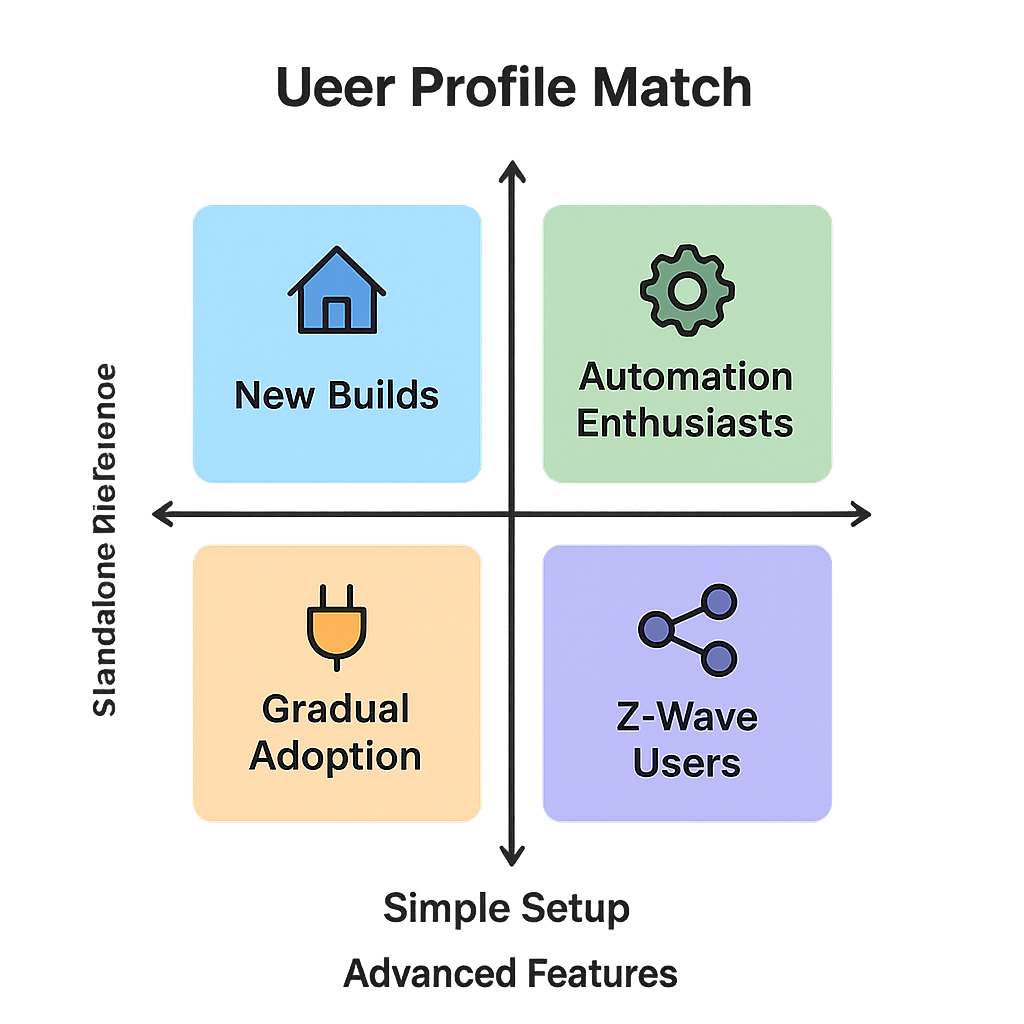
User Profile Recommendations
- Aqara E1: Best for existing Aqara users, new smart home builds, automation enthusiasts
- Fibaro: Ideal for Z-Wave networks, gradual smart home adoption, device independence preference
- Rental properties: Fibaro's standalone nature may be more suitable for temporary installations
- Large homes: Aqara's multi-sensor approach may provide better zone control
Consider also your technical comfort level and long-term plans. The Aqara system requires more initial setup and sensor placement planning but offers extensive automation possibilities. The Fibaro controller provides immediate functionality with simpler installation, similar to fitting hive radiator valve systems, but may require external sensors for optimal performance in certain mounting situations.
Both devices support smartphone control, allowing you to control your heating from your phone regardless of your location. However, the extent of automation and integration capabilities differs significantly between the ecosystem-integrated and standalone approaches.
Making Your Smart Heating Decision
Both the Aqara Radiator Thermostat E1 and Fibaro Heat Controller excel in their respective approaches to smart heating control, with each offering distinct advantages depending on your smart home setup and priorities. The Aqara E1 shines in integrated ecosystems where advanced automation, face recognition, and multi-sensor coordination create sophisticated heating scenarios, while the Fibaro Heat Controller excels as a versatile, visual, and broadly compatible solution that works independently across various Z-Wave systems.
Your choice ultimately depends on whether you prioritise ecosystem integration with advanced automation features or prefer a flexible, standalone solution with broad compatibility and intuitive visual feedback. Both devices provide excellent temperature control and energy-saving capabilities, but their integration approaches serve different smart home philosophies and user preferences.
Final Considerations
- Ecosystem integration vs device independence priorities
- Existing smart home infrastructure compatibility
- Budget considerations including additional sensors or hubs
- Installation complexity and mounting requirements
Consider which features align most closely with your current smart home setup, technical comfort level, and long-term automation goals. Whether you're interested in installing radiator valve controls for the first time or upgrading existing heating management, both the Aqara E1 and Fibaro Heat Controller offer compelling benefits worth exploring to find your ideal smart heating solution.


